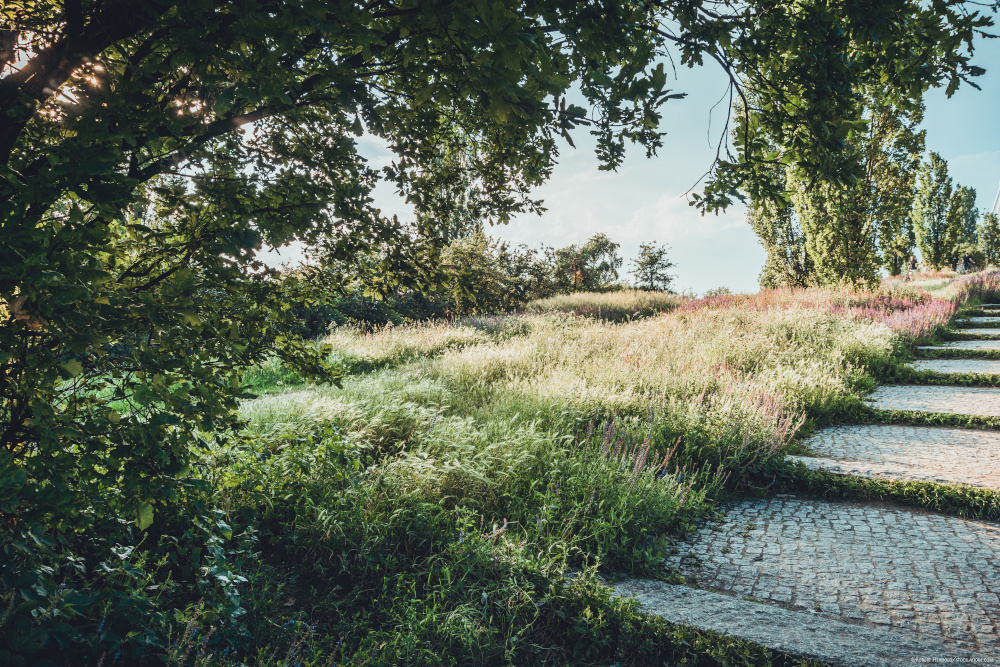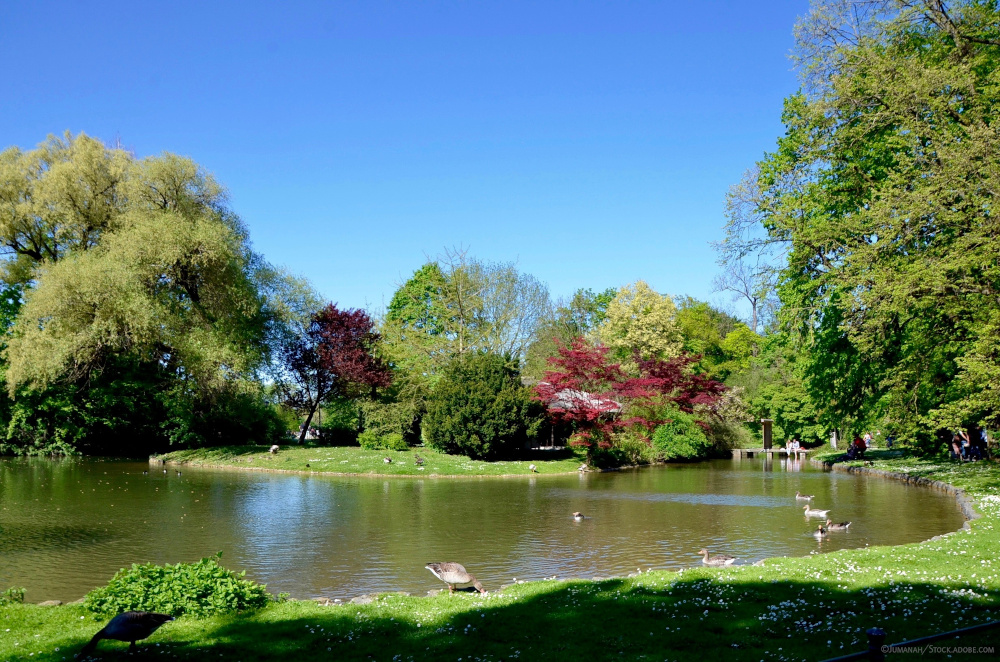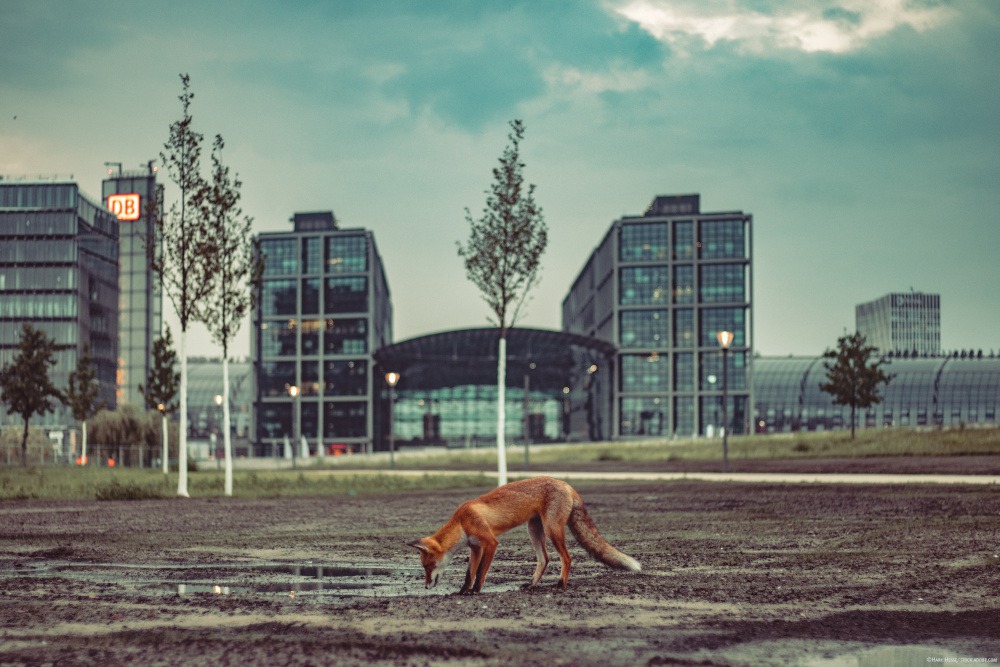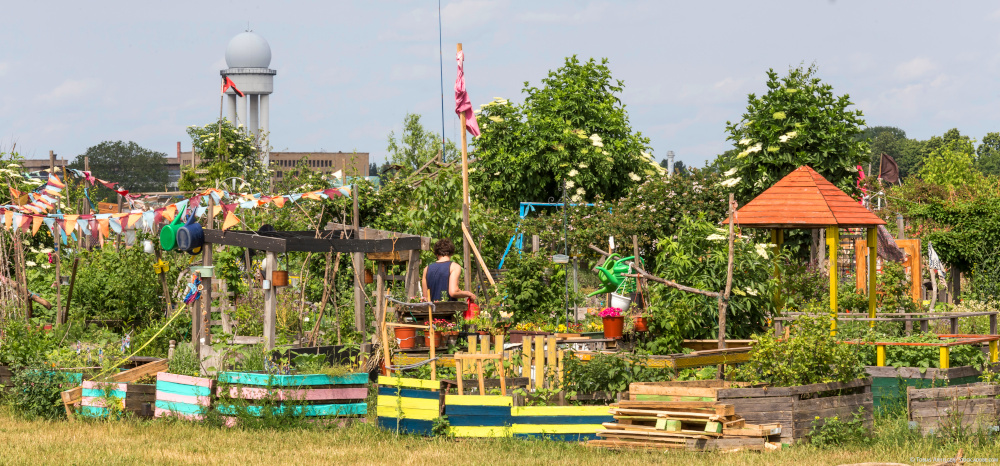“Country” equals blooming landscapes and biodiversity, “city” equals concrete and wasteland? That's not true! If you wander through the city with your eyes and ears open, you can discover a surprising variety of animals and plants that know how to use the advantages of urban space for themselves – what these are, explains the well-known ecologist Josef H. Reichholf and shows why the city is a true biodiversity hotspot in many places.
The coexistence between human and feathered city dwellers usually works excellently: those interested in the world of birds register the species and their populations at the morning bird concert in the city parks, count birds at the feeding stations in winter or take part in more in-depth ornithological research, be it on peregrine falcons or owls the cities. Counts of waterbirds on and around urban water bodies have been taking place for many years. Ringed and otherwise marked geese, swans or ducks can be followed on their (flight) paths. Citizens' initiatives are increasingly opposing the idea of ”decimating” waterfowl by shooting them. The birds living in the wild in the city are rightly viewed as a common good that cannot be disposed of by individual stakeholders alone.
This attitude is increasingly extending to mammals. Not only squirrels are observed and fed, but also beavers in city waterways, raccoons in backyards, foxes in the garden and hedgehogs in general, even though they are really not pets. A certain trend towards making gardens more butterfly and wild bee friendly is becoming noticeable. Tree protection is a given. It has long been accepted that not all green areas are permanently mowed like golf lawns and have to serve as lawns for sunbathing. Enabling flowering meadows saves money. Like the reduction in some of the excessive care that was taken for granted because everything used to have to look slick and cleaned. If you give them up, more nature becomes possible.

However, all of this, important as it is, would not be enough to explain the high biodiversity in cities. Other very important factors come into play. There are three very different ones that generally and globally determine biodiversity: area size, structure and food/nutrients. There are also two others: the effects of enemies/disturbances and, to be understood as a general condition, the local/regional climatic conditions.
When it comes to bird life, it can be said that the diversity of species increases with the size of the cities. But the area effect only explains about half of the species diversity. The vast majority of cities are well above the expected value given their area size, which they would have if they corresponded to the average Central European landscape. The fact that this is the case is due to the particular diversity of structures that exist in cities.
What is meant by “structural diversity” (scientifically: structural diversity)? It not only includes the main components we are familiar with, such as buildings, streets and roads, gardens and parks as well as the waters in the city, but also numerous detailed structures for each of these categories. Old buildings, especially those built in the neoclassical style at the end of the 19th or beginning of the 20th century, as well as old castles and fortifications, have many niches, bay windows, projections or angles. Birds can build their nests on or in it, take resting and viewing places and bats can take their daytime rest.
The complete opposite of this are modern, fully glazed high-rise blocks without any facade structure. They represent the zero value for structural diversity. They should actually be recorded on the negative side because countless birds die due to their glass exterior.

The height of the buildings and their shapes determine how much and how far they cast shadows and how they influence the air currents directly above the city. Every tall building surrounds a fundamentally similar environment, like a high mountain or, together with other buildings of different heights, like a mountain range. Mountain birds were among the first to settle in the cities. But while individual mountains often cover more than the area of a large city, in the city every building is surrounded by a small-scale variety of different sides and exposures. No natural habitat achieves a comparable level of structural diversity in this respect. This also applies in principle to the extremely dense network of roads and routes that connect and separate. Just like with traffic.
The residential areas take structural diversity to the extreme in another way. Because we humans have a tendency to combine the gardens as “our territory” with a strong degree of independence and a tendency towards conformity. The garden becomes individual, but remains a “garden”, as is usual in the relevant district. Deviations from this reinforce the rule, because people usually disapprove of it. Allotment gardens are subject to standardization requirements for the same reasons – with individual grades being granted, of course.
As a bird, one might think that the urban gardens of residential areas were pre-formed as nesting and breeding grounds for them. They are often suitable for Amsel & Co. The fencing, often with fairly dense hedges, reinforces the territorial character. In addition to this spatial structure on the floor, which is repeated thousands of times in never the same version, there is a further structuring in the vertical. The structural spectrum ranges from open or short-grassed soil to landscaped beds with different plants to knee-high, chest-high or man-high hedges along the fence and trees of different heights.
It is repeated on a larger surface dimension in the parks. These can, like the English Garden in Munich, merge directly into forest on the periphery or form a large forest island, like the Tiergarten in the center of Berlin. The size range of inner-city waters begins with small garden ponds. It extends to larger ponds or actual lakes and the sea when the city is on its shore. The same applies to flowing water, from small streams to cities on rivers or streams.
Tip: Josef H. Reichholf explains in a video interview why near-natural river landscapes are important for biodiversity.

The spectrum of biotopes therefore includes very dry places in a very small space, as well as bodies of water, open or fairly wooded areas, freely accessible areas or closed areas. Special species can live everywhere. Measuring the entirety of structural diversity is difficult or downright impossible, even if small animals such as insects and correspondingly small plants are to be included in this. Two aspects should be emphasized in this context. Firstly, this structural diversity arose and arises by itself and secondly, we associate it with something very much related to ourselves, namely the quality of life in the place where we live or work.
A legitimate objection leads to the third, most neglected, main factor that enables or promotes biodiversity. There are corners where nettles or brambles grow because “nothing is being done.” That is correct and leads to this main factor. There, for whatever reason, the soil is very rich in plant nutrients, especially nitrogen compounds, which promote the growth of a few plant species. They are characterized as “nitrophilic” (nitrogen-loving; better nitrogen-requiring). In fact, a high level of structure has little benefit for biodiversity if over-fertilization causes one or a few species to proliferate. They crowd out the many others that could thrive if the soil were leaner. Left to their own devices, nutrient-rich areas that are designated as “biotopes” and even protected from human disturbance and interference by high fences often grow completely over in just a few years and lose biodiversity in the process instead of being preserved or promoted.
In plain language, this means that the high level of disturbance in urban biotopes contributes to the preservation of biodiversity for a large number of small animal and plant species. Of course, things are different for larger, disturbance-sensitive species. Or, more generally, what is good for some may be unfavorable for others. However, moderate levels of disturbance generally benefit biodiversity. This explains the initially paradoxical situation that a lot of biodiversity can develop in the largest concentrations of people. The problem of disturbances or, more directly, persecution particularly affects larger birds and some mammals. Where people are required to stay on solid paths or roads, adaptive species can quickly adapt, greatly reduce their flight distance and thus inhabit places in the city that would not offer them any chance of living in the wild. Because they are not only disturbed there too often, but are also directly persecuted and killed.

Finally, the urban climate with its particularities must be cited as a framework condition. It benefits many species because it is warmer and drier, less windy and frosty in the (large) cities. Again, there are details that are influenced by the material of the subsurface, the structures and the floor. So bats in cities, apart from the all-glass buildings, can quite easily find daytime resting places or nurseries that offer exactly the right microclimate for this, because there are all sorts of differentiations from sunny, semi-shaded or shady, drier or wetter places. In forests, especially in commercial forests made up of uniform age-class stands of trees, there is nowhere near this diversity.
Tip: Read about the challenges that forestry faces when it comes to biodiversity in the forest “The forest in climate change”
Not only the actual city climate, as measured meteorologically, expresses how suitable a place is for the life of plants and animals, but also the microclimate. Nowhere is this as diverse as in the cities. All the main factors that determine the occurrence and frequency of species exist in very different combinations in the city.
The result is biodiversity that is significantly above the “normal” for the region in question when comparing areas of the same size. The city as a living space is therefore something new, but nothing fundamentally different and certainly not “unnatural,” as is often assumed or polemicized against the city and its development. It is man-made, but so is the cultural landscape; every cultural landscape, not just that of the “good old days” that we conservationists mourn.



